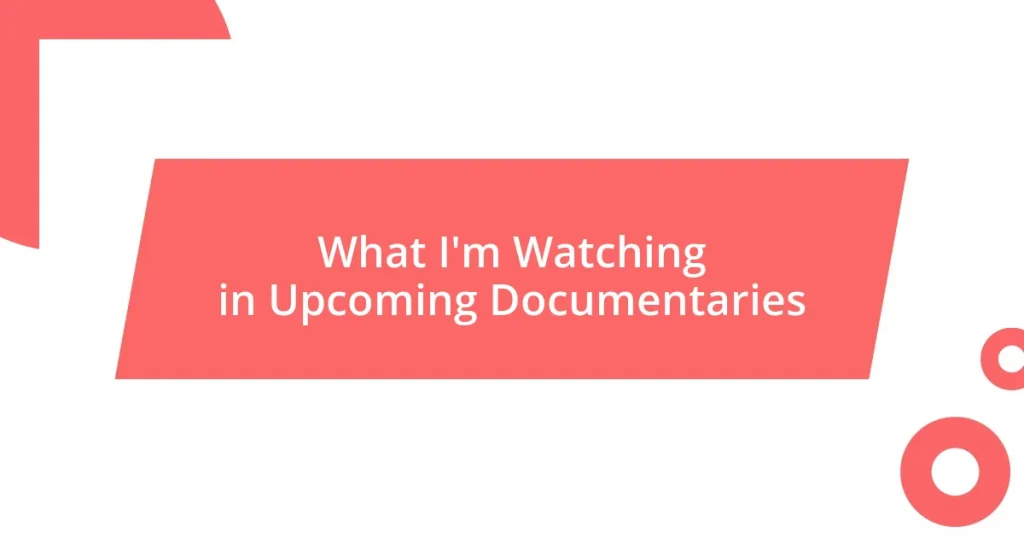Key takeaways:
- Thorough market research and a clear vision are essential to meet audience needs and avoid project pitfalls.
- User experience should be prioritized over complexity, emphasizing the importance of iterative development and embracing player feedback for improvement.
- Building a sustainable indie team hinges on effective communication, flexibility in roles, and fostering a culture of open feedback to enhance creativity and project success.

Understanding common indie failures
One of the most common failures I’ve seen in indie games is the lack of thorough market research. I remember a project I was part of, where we poured our heart and soul into a game that I just knew in my gut nobody wanted. It was a painful realization, but it got me thinking: how many developers overlook their audience in pursuit of their passion?
Another frequent pitfall is scope creep. I’ve been there, too—starting with a simple concept that spiraled into an unwieldy project full of features we thought were must-haves. It’s easy to get caught up in the excitement and lose track of what truly matters. I often wonder, how can we reign ourselves back to focus on the core experience we want to deliver?
Finally, I’ve observed that many indie developers underestimate the importance of marketing. I can recall a fantastic game release that went virtually unnoticed solely because the team didn’t plan an effective promotional strategy. It’s heartbreaking to think about all the hard work that was overshadowed by a lack of visibility. How does one balance between making the game and getting the word out? It’s a tricky tightrope I’ve learned to navigate over the years.

Key reasons for game failures
One major reason I’ve seen many indie games falter is inadequate testing. I recall a project where we thought we had created a smooth gaming experience. But when players got their hands on it, they encountered bugs and glitches that we had missed. It was disheartening to see our vision tarnished due to basic oversight. It taught me how essential robust testing is before launching to ensure our games run as intended.
Another key factor is the lack of a clear vision or direction. During one of my earlier projects, we started with multiple game ideas but couldn’t finalize on one. As a result, we ended up with a disjointed gameplay experience that confused players. This taught me that clarity in concept is crucial. Without it, I feel the whole development process can veer off course, leaving developers and players both dissatisfied.
Finally, financial mismanagement is a common downfall. I have experienced the stress of running short on funds halfway through development. It’s a terrifying position that can lead to rushed work or compromises on quality. I’ve learned to embrace budgeting more seriously and ensure that there’s enough cushion to keep the project afloat, allowing creativity to flourish rather than be stifled by financial worries.
| Key Reasons for Game Failures | Description |
|---|---|
| Inadequate Testing | Missing bugs and glitches can tarnish the overall experience of the game. |
| Lack of Clear Vision | A disjointed gameplay experience arises when the initial concept is not defined. |
| Financial Mismanagement | Running short on funds can lead to rushed work or compromises that impact quality. |

Lessons learned from design mistakes
I’ve seen firsthand how poor design choices can lead to substantial setbacks in indie game development. In one project, we spent weeks perfecting intricate mechanics that we were convinced were revolutionary. When it came time for players to try them out, their confusion and frustration told an entirely different story. It was a humbling moment, reminding me that complexity doesn’t always equal fun, and that simplicity often reigns supreme in engaging gameplay.
Here are some crucial lessons I’ve drawn from design mistakes:
-
Prioritize User Experience: Design concepts must start from the player’s perspective. What feels intuitive to developers may not translate to players. Testing early and often can help bridge that gap.
-
Stay True to Core Mechanics: It’s tempting to complicate gameplay with added layers, but often, the magic lies in a well-polished, simple concept. Focus on refining what truly makes the game enjoyable.
-
Solicit Honest Feedback: I learned that gathering feedback from a diverse group during development is invaluable. This diversity can shed light on design flaws that a homogeneous group might overlook.
-
Embrace Iteration: Mistakes are a part of the journey. Emphasizing an iterative approach allows for continual improvement and adaptation, ultimately leading to a stronger final product.
-
Avoid Over-Engineering: When I over-engineered features, I wound up not only delaying timelines but also overwhelming players. Keeping the design elegant and straightforward can elevate the experience tremendously.
Embracing these lessons is essential. They often come from moments of vulnerability and self-reflection, pushing me to become a better developer. The path of game design is fraught with mishaps, but it’s in those missteps that I find the greatest opportunities for growth.

Importance of player feedback
Player feedback is like a guiding star for indie developers. I remember the first time I released a game without really asking the players what they thought. The silence was deafening. It struck me that without their insights, I was navigating in the dark. I learned that active engagement with players not only illuminates their experiences but also reveals the hidden corners of a game’s design that I might overlook.
When I finally embraced player feedback, it was a revelation. There was one instance where players voiced their frustration with an obscure puzzle mechanic. Initially, I felt defensive, thinking, “How could they not get it?” But once I stepped back and re-evaluated, I realized the puzzle had missed the mark entirely. That moment taught me that feedback isn’t just criticism—it’s an opportunity to grow and refine my vision. It’s a way to understand my players better, ensuring the game resonates with them.
Moreover, feedback can create a sense of community around a game. I recall a forum conversation where players shared their experiences and suggestions. That exchange ignited excitement and resilience within the development team. The players weren’t just consumers; they became collaborators in shaping the game’s destiny. It made me realize that fostering this dialogue can lead to a product that genuinely reflects the desires and aspirations of the community, ultimately increasing its chances of success. So, why wait for players to speak up? Engaging them early could be the missing piece of the puzzle in your developmental process.

Managing expectations and scope
I’ve come to understand that managing expectations and scope is critical for indie developers. In one of my early projects, I set out to create an expansive open-world game, fueled by visions of grandeur. However, as deadlines loomed and resources dwindled, the reality hit hard: I was nowhere close. It reminded me that starting with a manageable scope ensures I build something that I can actually deliver—and ultimately keeps passionate players engaged without disappointing them.
Choosing a smaller scope can be both liberating and empowering. I recall a project where we focused on a single mechanic—a unique puzzle system—rather than trying to incorporate numerous features that seemed enticing. This laser focus allowed us to fine-tune the gameplay and showcase what truly mattered. Is it better to have many half-finished ideas or one polished gem? I learned firsthand that clarity in our objectives fosters creativity and depth in design.
Furthermore, I’ve found that setting realistic expectations within my team—and for myself—saves us from unnecessary burnout. After one overwhelming sprint, I took a step back and realized that constant pressure stifled our creativity. Taking time to celebrate small milestones helped maintain morale and reminded us of our shared passion. It begs the question: how can we balance ambition with sustainability? By being transparent about limitations, I’ve fostered a healthier collaborative environment that keeps us excited about the journey ahead.

Strategies for iterative development
Iterative development is one of those practices that transformed my journey as an indie developer. I vividly remember diving headfirst into a project, confident I knew what players wanted. However, it wasn’t until I implemented a series of playtests—small iterations—that I realized how much I had missed the mark. Each round of testing revealed something new, something I thought I had nailed but didn’t quite resonate with players. It seemed like a never-ending cycle at first, but with each iteration, I began to see the game take shape in ways I hadn’t envisioned.
The “fail fast, learn faster” mantra became my north star. In one project, I initially rolled out an elaborate combat system that fell flat. Instead of lamenting the time lost, we stripped it back and tested simpler mechanics one by one. Each test led to valuable insights, and I began to appreciate the beauty of incrementally building upon successes. At times, it felt disheartening to see a grand idea collapse, but each iteration ultimately guided us toward a more satisfying gameplay experience. I often asked myself, “What can I learn from this misstep?” And surprisingly, the answer was always a renewed perspective.
Moreover, involving the community in the iterative process created a shared sense of ownership. During one alpha release, I invited feedback sessions right into our Discord channel. The raw honesty from players was sometimes hard to swallow, but it fostered rich discussions that shaped the features in profound ways. Players would ask me, “Have you tried this mechanic?” or “What if you lowered that difficulty?” and those suggestions became game-changers. I realized that collaboration is not just about gathering data; it’s about nurturing relationships that breathe life into the game. How often do we overlook the well of creativity sitting right in our player’s hearts? Embracing their input in every iteration is where real magic happens.

Building a sustainable indie team
Building a sustainable indie team requires more than just assembling a group of enthusiastic developers. In my experience, finding the right mix of skill sets and personalities is crucial. During one project, I partnered with a talented artist who had an incredible vision but struggled with deadlines. It taught me that strong communication and aligned goals can bridge those gaps, ensuring everyone feels valued and invested in the final product. How often do we overlook the importance of synergy in a team?
As I navigated the challenges of indie development, I recognized the value of flexibility in team roles. In a previous project, we were short on resources, so I took on additional responsibilities, which meant learning new skills on the fly. This not only kept the project on track but also energized the team—everyone was willing to pitch in wherever needed. Have you ever faced a similar situation where adaptability saved the day? I believe it’s this cooperative spirit that turns a group of individuals into a cohesive unit, passionate about creating something special.
Lastly, nurturing a culture of feedback within the team has been a game-changer for me. I vividly recall a brainstorming session where I hesitated to share my ideas, fearing rejection. To my surprise, the feedback was overwhelmingly supportive and constructive. It encouraged us to express our thoughts freely, fostering an environment where everyone felt empowered to contribute. Isn’t it amazing how open dialogue can ignite creativity? I’ve learned that creating a safe space for honest communication not only boosts morale but also drives innovation.















